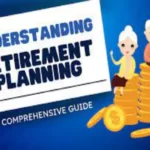Why Endowment Plans Still Count Among the Best Investment Plans in 2025
In the rapidly changing world of investment tools and financial planning, the year 2025 arrives with an added emphasis on security, assured returns, and comprehensive wealth management. Despite this change, one old-fashioned financial instrument is still holding ground: the endowment plan. Neglected in favour of more modern, flashy investment instruments, endowment plans have stood the test of time as goal-based, proven instruments, making them a viable candidate for the best investment plan in 2025.
This article discusses why endowment plans are still relevant in the present world, why they are so robust in times of market volatility, and how they rank alongside other investment instruments. If you are saving for your child’s education, creating a retirement corpus, or just seeking disciplined savings with life insurance, an endowment plan could be your best financial companion.
Knowing the Endowment Plan
Before we discuss the reasons for their long popularity, let’s first define what an endowment plan exactly is. An endowment plan is a life insurance policy that is a mix of savings and insurance cover. It permits policyholders to save a part of their income systematically while at the same time providing life cover to their family. On maturity or in case of the policyholder’s death, alas, the sum assured, with bonuses (if any), is received by the beneficiary or the insured. It is a long-term savings plan with the benefit of insurance protection on the side.
Why Endowment Plans Are Still Relevant in 2025
1. Guaranteed Returns in an Uncertain Market
In a world where the global economy continues to grapple with the consequences of supply chain disruption, inflationary stress, and unstable equity markets, risk-averse investors are gravitating towards products with safety and certainty. The endowment plan offers guaranteed maturity benefits and is thus particularly appealing in a risk-averse scenario. Mutual funds or ULIPs might promise higher returns, but they are at the mercy of market performance. Conversely, the dependability of an endowment plan provides reassurance.
2. Two Benefits Rolled into One: Savings + Life Cover
Most investors want convenience and consolidation in their financial portfolio. Through an endowment plan, you receive insurance and investment under one umbrella. This reduces the cost of buying two products separately and ensures that your long-term financial objectives, be it purchasing a home, child education planning, or retirement planning, are covered while keeping your family safeguarded against uncertainties.
This twin advantage places endowment plans as not merely insurance policies, but also complete financial planning instruments.
3. Promotes Disciplined Savings Habits
Perhaps the most underappreciated feature of an endowment policy is how it can promote financial discipline. With market-linked investments, there is high liquidity and the potential for regular withdrawals. Endowment policies, on the other hand, are tied to a fixed duration. This promotes long-term discipline and regular premium payments, which results in a savings culture, a key feature of the best investment scheme.
4. Tax Benefits
According to Section 80C of the Income Tax Act, the premiums paid for an endowment plan qualify for tax deduction. The maturity proceeds are also tax-exempt under Section 10(10D) as long as specific conditions are fulfilled. In 2025, with the government encouraging higher insurance penetration and tax relief on a savings basis, endowment plans remain an efficient investment opportunity from a taxation perspective.
5. Low Risk, Steady Growth
Though most investment products today are aggressive in nature, addressing the aggressive investor, not everyone can afford or is inclined to embrace high-risk exposure. The endowment plan provides low-risk growth through investment in debt instruments. Though returns may not be as exciting as equities or mutual funds, they are stable and consistent, and consistency counts when one plans for the long term.
Realigning with the Financial Goals of 2025
As financial aspirations become more complex, retirement early, holiday homes, and overseas education of kids, individuals are seeking investment options based on their goals. Endowment plans, if chosen appropriately, go hand-in-hand with such objectives. Their pre-defined tenure, amount assured, and maturity benefit enable policyholders to plan with high confidence.
Innovation in Endowment Plans
Insurance companies in 2025 will no longer provide inflexible, orthodox policies. Endowment plans now are much more flexible and adaptable. Some new plans have riders like accidental death benefits, waiver of premium, or coverage for critical illness. Others provide partial withdrawal, loan facilities, and policy continuation benefits even in cases of non-payment due to financial crisis.
This product development keeps endowment plans current, yet not obsolete, and is actively updating to meet investor demand and lifestyle shifts.
Endowment Plans Compared to Other Investments
To see how endowment plans compare to other widely popular forms of investment in 2025, let us descriptively examine their comparative attributes. Endowment plans are low-risk, moderately returning investments with life insurance protection. They are best suited for conservative investors who value financial security and goal-oriented savings. Mutual funds, however, have moderate to high risk and provide greater potential for returns, but do not have insurance coverage. They are best suited for investors seeking growth with a higher risk tolerance.
Fixed deposits are still the choice of risk-averse investors, but they return less and don’t have the protection of insurance. ULIPs mix investing and life cover like endowment policies, but are market-linked and therefore have more volatility. Public Provident Fund (PPF) is another low-risk, government-guaranteed savings instrument with moderate returns and no
insurance cover, hence appropriate for retirement planning. If your goal is capital protection with moderate returns and insurance cover, an endowment plan still stands among the best investment plans.
How to Select the Right Endowment Plan
With so many available, how do you know that your selected endowment plan is the right investment plan for you?
- Specify your financial objective: Wealth creation, educating children, or retirement–your objective will decide policy duration and amount assured.
- Analyze the bonus plan: A few companies provide reversionary bonuses and terminal bonuses. Review the historical performance to get an idea of the possible returns.
- Review insurer’s claim settlement ratio: The higher the ratio, the greater the reliability.
- Think about riders: Additional riders, such as a critical illness or accidental death rider, can add value to your policy.
- Compare prices: Demand transparency in fees such as administration, mortality, and rider premiums.
Conclusion
Amidst the changing landscape of finance, where fads and gadgets rise and fall, the endowment plan remains a reminder of dependability, keeping things simple, and two-in-one planning. Its applicability in 2025 is not merely due to convention—it’s because it continues to provide value, protection, and certainty, all of which are only growing more desired in the financial climate today.
If you’re a new investor or looking to diversify your portfolio with low-risk products, include an endowment plan in your scheme. It may not be the most glamorous, but it’s one of the best investment plans for those who value the peace of mind that comes with guaranteed returns and full coverage.







